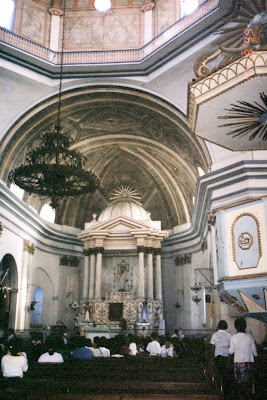From the Leon Apacible Museum and Library, Jandy and I proceeded to the HME Embroidery Store, one of the town’s pioneers in the now dying art of fine needlework of hand-embroidered, semitransparent pina (made from pineapple fibers) cloth which is usually done by women in their homes and sundried around the market.
 |
| HME Embroidery Store |
The store is located within the Art Deco-style ancestral house (also called the “Pink House”) of Ramon and Jovita Estacio, built in 1918 with narra and molave shipped all the way from Mindoro. We were shown around the second floor by Mrs. Ofelia Estacio, the wife of Honesto Estacio, the current owners, where we appreciated its antique furniture. I bought barong cloth for PhP600 at the ground floor store.












